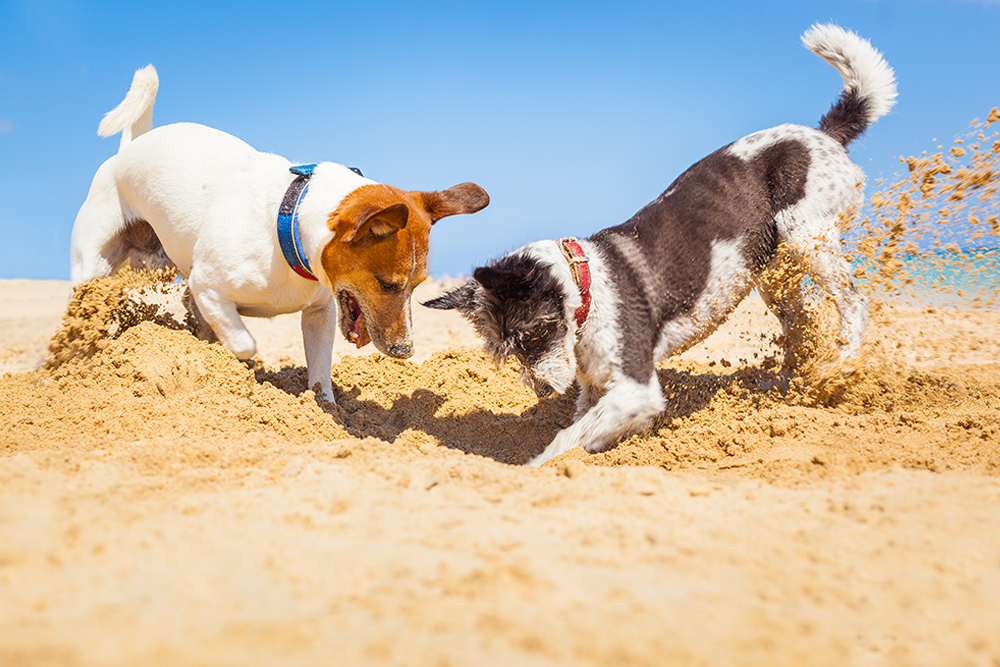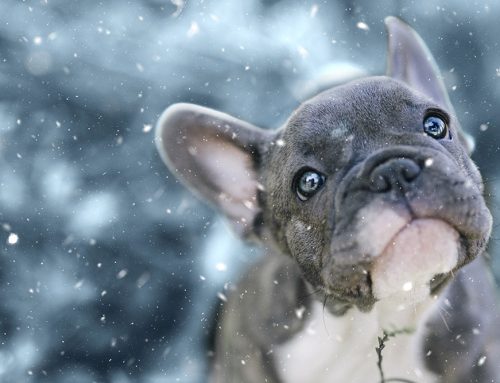Protecting your pet from summer heat
As we move into the hottest part of the summer it’s always timely to revisit the topic of heatstroke (hyperthermia) in pets. Both cats and dogs may need extra attention in hot weather. Let’s talk about pet sweat.
Humans are typically a very sweaty species. Sweating is one of the ways that the body regulates its own temperature. The body shivers to regulate temperature in response to cold and the body sweats in response to heat. When the fine layer of moisture spreads over the skin it begins to evaporate. This evaporation causes cooling to occur on the surface of the body and helps lower our body temperature. It’s a very effective cooling method for humans because we have sweat glands distributed over most of our body surface. If we sweat enough, cooling occurs all over.
The dog and the cat, on the other hand, have most of their sweat glands located around their foot pads. Occasionally at the clinic, very nervous cats will leave a trail of wet footprints across the exam table. You may have seen your own overheated dog leave damp footprints on your wood floors at home. But there’s not a lot of surface area around the foot pads to accomplish cooling. So dogs and cats have to use additional methods to cool themselves down.
Dogs use open mouth panting as their primary method of cooling. Moisture on both the tongue and the lining of the lungs evaporates. This is a very effective way of cooling the dog down. It’s one reason why it’s so very important to keep pets well hydrated during hot weather – to keep their mucous membranes moist so evaporation can occur.
The brain of the dog is also able to dilate the blood vessels in the face and ears in response to heat. This allows the dog’s blood to flow closer to the surface of the skin where it is cooled by closer contact with the cooler ambient temperature. This pretty much only works when the dog is overheated due to exercise. Because if the temperature is higher outside than the dog’s own body temperature nothing is accomplished.
Canines also possess a very interesting anatomical bonus called a rete mirable which is located at the base of the neck. It is a complex grouping of small arteries and veins which thermally isolates the head from the rest of the body. In other words, the brain, which is very heat sensitive, is protected from the muscles of the body, which generate heat. This is why dogs can sustain physical exertion over a prolonged time in a hot environment. Prey animals may slow due to overheating as heat from the body impacts the brain. A rabbit may be able to outrun the dog, but eventually, it will have to slow down or overheat. The cool brained dog, if it has kept up the chase, will then catch up.
Cats deal with heat a little differently. They seek out shade and avoid exerting themselves. They will sleep away the heat of the day under the porch, in the shade of a tree, or in front of a fan. They will also seek out cool surfaces where they stretch out to maximize skin contact. Cats will also groom themselves more frequently during heat events. As saliva cools from their fur and the surface of their skin, it performs the same job as sweat.
If a cat resorts to panting due to the heat then you know it’s hot. Usually, cats only pant in temperatures over 90 degrees. Although cats will also pant when extremely stressed or in pain. If your cat is panting due to hot weather, you need to take steps to cool it down. And on that note, here are some ways to keep your pet cool when it’s hot:
- Do not leave your animal in a parked car on any day when the temperature is over 70 degrees. It takes very little time for the temperature in a closed car to rise to a dangerous degree.
- Avoid walking your dog (or cat) on concrete, asphalt, or other hardscape paving in the direct sun. If you can’t walk barefoot on those surfaces, your pet shouldn’t be walking on those surfaces. Their foot pads are very sensitive and can burn in very little time when exposed to hot surfaces.
- Keep your pets indoors in air conditioning or in cool rooms with fans.
- If outside, make sure shade is constantly available to your pet.
- Offer cool water at all times. You can also freeze a bowl of water overnight so it will thaw and provide cold water throughout the day.
- Have your long-haired pet groomed for summer style: a puppy cut for your dog or a lion cut for your kitty.
- Spray down your dog with a hose and wipe down your cat with wet towels.
- Provide your dog with a kiddie pool outside. Sometimes they may even want to bring the pool inside!
- In very hot weather, cats will sometimes bed down on “beds” of ice packs if they are wrapped in towels or pillowcases.
- Avoid exercising your dog in the middle of the day.






Leave A Comment